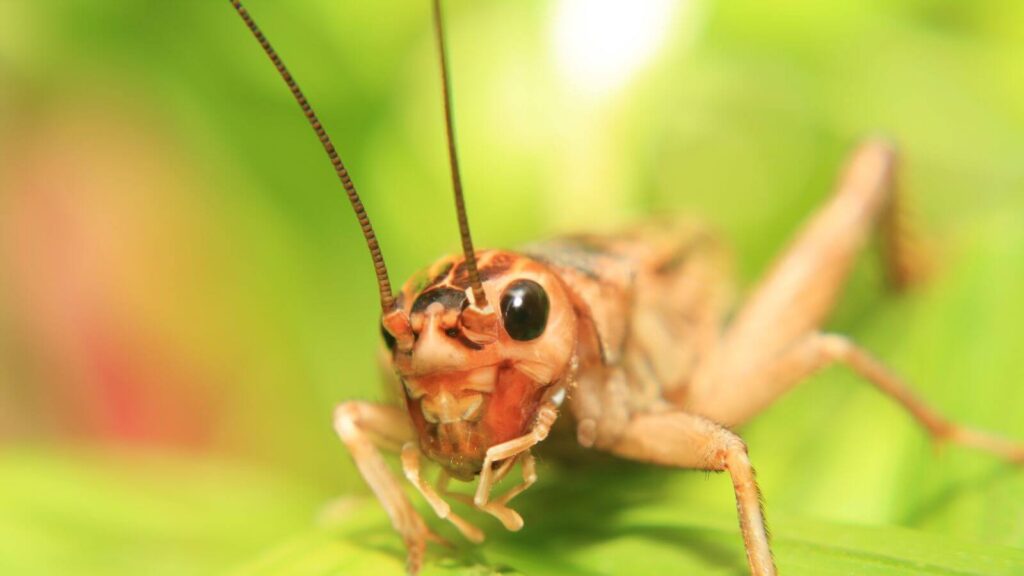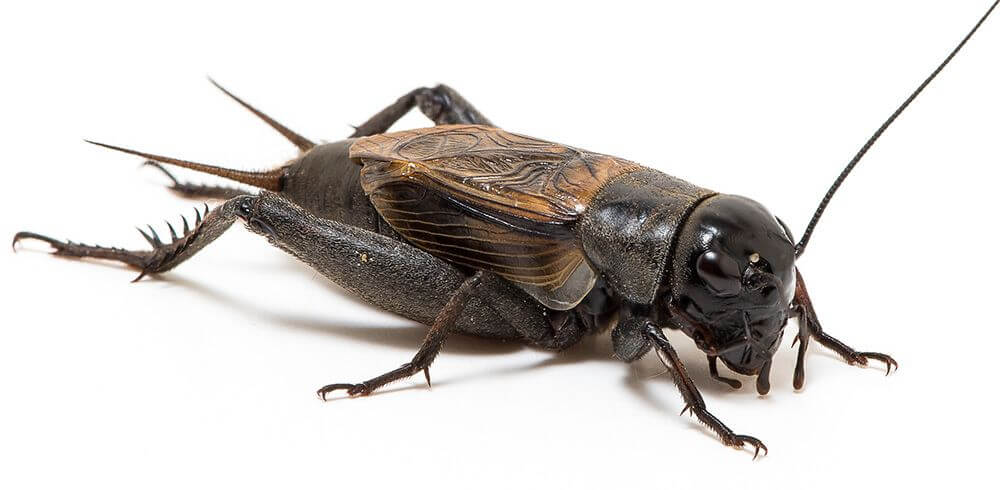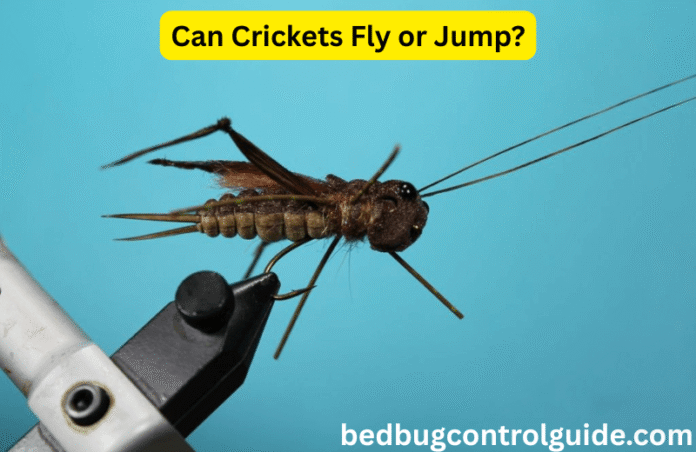Many people ask, can crickets fly? The answer is nuanced. Certain species possess wings and, under the right conditions, can take to the air, while others are wingless and permanently earthbound. Among the winged, flight capability can vary; some individuals are adept fliers, while others make only brief, clumsy bursts. Typically, even the capable fliers prefer to rely on powerful hind-leg jumps or deliberate crawling locomotion, reserving sustained flight for rapid escape or territorial disputes.
In the following sections, we will examine the taxonomy of flying and non-flying crickets, the mechanics of their wings, and the contexts in which flight is energetically favored. Read our latest post on Do Crickets Have Wings: Identification, Behavior & Life Cycle.
Which Crickets Can Fly?

Some crickets achieve sustained flight, while others are obligation-bound to the ground. The following outline distinguishes between flying and non-flying representatives.
Flying Crickets
House Crickets (Acheta domestica) possess fully formed wings and are capable of flight. Nevertheless, flight is a rare choice; individuals typically prefer to navigate by crawling or short hops.
Field Crickets (Gryllus pennsylvanicus) exhibit the same pattern. Their wings enable controlled take-off, yet the species is frequently observed traversing the ground on spiny legs unless energetics of dispersal dictate otherwise.
Non-Flying Crickets
Camel Crickets (Ceuthophilus species) are entirely wingless and thus exhibit no capacity for flight; locomotion is restricted to leaping and crawling.
Jerusalem Crickets (Stenopelmatus species) show a similar morphology, possessing neither hindwings nor forewings. Their movement is similarly bound to the ground, relying on a specialized locomotion that combines crouched crawling and occasional powerful hops.
Read Our Most Recently Published Guides on Termites, Earwigs, Fruit Flies and Gnats:
- How Much Does it Cost to Get Rid of Bed Bugs? 2025 Pricing Guide
- What Do Bed Bugs Look Like?
- Early Signs of Bed Bugs on Mattress? Explained in 2025
- Skin Early Signs of Bed Bugs? Identification, Prevention
- Baby Termites vs Ants? How to Tell the Difference
- How Big are Termites? How to Identify Termites and Treatment
- What Color are Termites? Their Types of Termites
- Do Fruit Flies Bite: How to Identify and Get Rid of Them at House
- Drain Flies vs Fruit Flies: How to Tell the Difference in 2025
- Are Earwigs Dangerous or Poisonous to Humans and Dogs?
- Why Are There Earwigs in My House? Prevention and Treatment Guide
- How to Get Rid of Earwigs in Your House Fast?
Do Crickets Prefer Jumping or Flying?

Although many crickets possess fully developed wings, they commonly opt for jumping rather than flight. The preference for jumping is due to its lower energetic cost and greater speed. By springing from the ground with powerful hind legs, they can cover substantial distance in a brief instant.
Jumping serves several purposes:
- A sudden fright prompts a vertical or horizontal leap.
- The animal hops intermittently when foraging, centering on patches of food.
- A quick escape from a sensing predator often results in a near-vertical burst.
For excursions of less than a meter, jumping remains the primary locomotor mode and is energetically optimal.
How Do Cricket Wings Work?

Most crickets bear two pairs of wings, with distinctive mechanical functions. The anterior, or tegmina, consist of a thickened, horn-like membrane and lie flat over the body when not in use. The posterior hind wings, when fully expanded, transmit aerodynamic lift.
Wings contribute not only to locomotion but also to the species’ nocturnal acoustic repertoire. During courtship, a male raises the wings and rubs the outer edge of the hind wing along the tegmen in a repetitive train of impulses, a behavior termed “stridulation.” The sound functions to attract distant females and to establish territory.
When Do Crickets Fly?
Flight is restricted to specific behavioral contexts, and crickets seldom take to the air unless one of the following motivations prompts them:
- A lurking predator stimulates a powerful take-off, often directed away from the threat.
- A distant food source, sensed by olfaction, is reached by gliding flight.
- The onset of the reproductive season spurs males to search for conspecific females across considerable ground.
- Wind-dissected males encountered by chance may navigate to an unoccupied microhabitat.
Most of the above flights occur after dusk, commonly in the beam of artificial illumination. Clearance is observed only when temperatures remain above 15 degrees Celsius and wind speeds are below eight meters per second. Cold, damp air inhibits ventral wing lift and leading edge stall.
Can All Crickets Fly?
Not all crickets are capable of flight. The ability to fly varies according to the cricket species in question. Certain species possess fully developed wings suited for flying, others are equipped with wings but exhibit little inclination to take to the air, while some possess no wings whatsoever.
Key Facts About Cricket Flight
- A fraction of cricket species are capable of flight while the majority are not.
- Both house and field crickets possess wings.
- Camel crickets and Jerusalem crickets do not have flying adaptations.
- Flight ability is influenced by species, developmental stage, and environmental conditions.
- The majority of crickets show a marked preference for leaping.
Final Words
So, do crickets fly? A portion of them can, but a sizable number cannot. The capacity to fly hinges on the particular cricket species. Is their flight effective? Frequency of flight varies; even the winged groups often reserve their flight for necessity. The majority depend instead on rapid, powerful leaps that evince a strong preference for ground escape.
Crickets are distinctive insects. Their locomotion and acoustic behavior diverge among species, but they share an engaging repertoire of movement and sound production. Upon encountering a cricket indoors, it may opt to ascend into the air, spring across the floor, or continue a subtle chirp from a dim recess. Follow Us on Facebook, Pinterest and Twitter for the latest updates.
FAQs
Does the house cricket fly?
While capable of flight, the house cricket prefers crawling or jumping and seldom takes to the air.
Do house crickets possess wings?
Yes, house crickets have a pair of forewings and a pair of hind wings.
Do black crickets jump?
Yes, black crickets are agile leapers and frequently travel significant distances in a single jump.
Can crickets bite?
Crickets may bite but do so infrequently, and their bite is not harmful to humans.
Are house crickets detrimental?
House crickets are generally harmless; they may cause minor damage to fabric or paper but are not a significant threat.
What is the lifespan of an adult cricket?
Adult crickets typically live for 2 to 3 months.
What controls cricket populations?
Crickets are susceptible to insecticidal sprays, predation by spiders and birds, and low temperatures.
Are crickets considered good omens?
In several traditions, crickets symbolize good fortune and are occasionally kept as domestic companions to invite that luck indoors.
Do crickets produce eggs?
Indeed. Female crickets deposit eggs into damp earth by means of a slender, tubular ovipositor, which they extend to insert the eggs.



